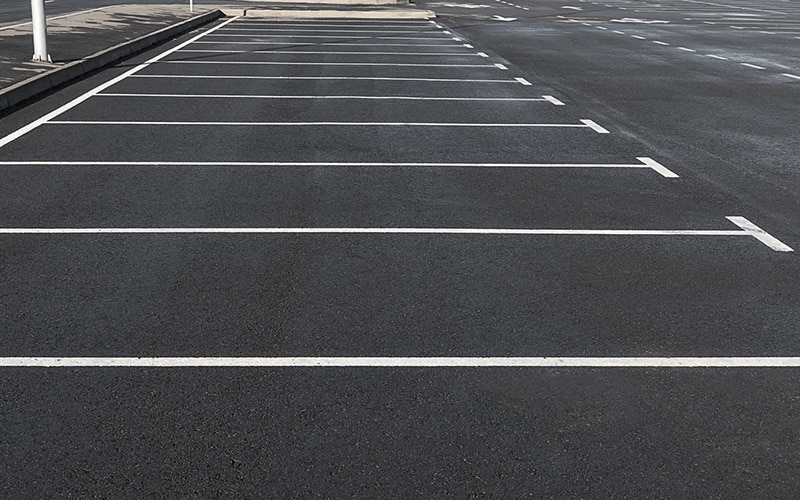Make Best Use Of Investment Returns: Angled Parking Lot Perfection with Asphalt Sealing
Make Best Use Of Investment Returns: Angled Parking Lot Perfection with Asphalt Sealing
Blog Article
Warm Mix Asphalt: A Sustainable Solution for Pavement
Warm Mix Asphalt (HMA) has actually emerged as a leading sustainable option for sidewalk options, offering a myriad of ecological advantages and ingenious modern technologies. As the need for environmentally friendly construction techniques grows, exploring the subtleties of HMA's sustainability can provide useful insights right into the future of sidewalk remedies.
Ecological Advantages of Hot Mix Asphalt

Moreover, Hot Mix Asphalt helps to mitigate city warmth island effects. Its dark color takes in sunlight, lowering the quantity of warmth showed back into the environment contrasted to lighter-colored sidewalks. This can lower ambient temperatures in urban areas, decreasing the demand for cooling and inevitably minimizing power intake.
Additionally, Hot Mix Asphalt adds to improved stormwater management. Its porous nature permits water to reenergize and infiltrate the sidewalk groundwater supplies, lowering drainage and the danger of flooding. These ecological advantages make Hot Mix Asphalt a lasting choice for leading highways and roads.
Power Performance in HMA Manufacturing
Is energy efficiency a vital aspect in the production of Hot Mix Asphalt (HMA)? Energy plays a considerable role in the manufacturing of HMA, influencing both expense and environmental sustainability. One crucial facet of power efficiency in HMA production is the usage of warm mix asphalt (WMA) innovations.
In addition, developments in plant modern technologies have led to even more energy-efficient HMA production procedures. By maximizing energy usage in HMA manufacturing, the sector can reduce its carbon impact while keeping premium pavement materials.
Recyclability of Hot Mix Asphalt
The recyclability of Hot Mix Asphalt (HMA) is an essential element of its sustainability and lasting ecological influence. HMA is just one of the most recycled materials in the USA, with over 100 million loads of redeemed asphalt pavement (RAP) being recycled every year in new pavement building. Reusing HMA provides a number of ecological advantages, such as minimizing the need for virgin materials, decreasing energy intake during manufacturing, and decreasing the amount of waste sent to garbage dumps.
The procedure of reusing HMA includes crushing the existing pavement, squashing it right into smaller sized items, and mixing it with new aggregate and asphalt binder to create a recycled mix. Overall, the recyclability of HMA plays a significant duty in advertising sustainable techniques within the pavement sector.

Long-Term Efficiency of HMA
Asphalt sidewalks demonstrate longevity and resilience over an extensive duration, reflecting the long-term efficiency of Warm Mix Asphalt (HMA) The longevity of HMA can be associated to its ability to endure hefty traffic tons, rough weather, and the effects of aging. Researches have actually revealed that properly designed and appropriately constructed HMA pavements can last for 20 years or even more with routine upkeep. The trick to taking full advantage of the lasting efficiency of HMA depends on making use of top notch products, adhering to best techniques in building and construction, and carrying out efficient maintenance techniques. Proper water drainage, routine inspections, and timely fixings are important for maintaining the architectural honesty of HMA pavements with time. In addition, innovations in HMA modern technology, such as using polymer-modified binders and warm mix asphalt, have actually further improved the longevity and longevity of HMA pavements. By prioritizing top quality building and upkeep methods, HMA proceeds to show itself as a sustainable and affordable remedy for lasting sidewalk infrastructure.

HMA: Sturdiness and Sustainability
Demonstrating both sturdiness and sustainability, Hot Mix Asphalt (HMA) has become a keystone in the construction of durable pavement infrastructures - regrading. HMA's durability comes from its ability to withstand Homepage hefty loads, severe weather, and high traffic volumes, making it a reputable option for roadways, freeways, and airport terminal paths. The make-up of HMA, which usually consists of aggregates, binder, and filler, plays a crucial role in boosting Source its durability and resistance to wear and tear
Furthermore, HMA's sustainability depends on its recyclability and energy-efficient production procedure. The ability to recycle recovered asphalt pavement (RAP) in new HMA mixes decreases the demand for virgin materials and lessens the environmental impact of sidewalk building and upkeep. Furthermore, the power performance of creating HMA exists in its reduced blending temperatures contrasted to other sidewalk products, leading to lowered energy usage and greenhouse gas emissions.
Conclusion
To conclude, hot mix asphalt (HMA) supplies a sustainable option for pavement with its eco-friendly attributes. HMA's recyclability, power performance in production, and lasting longevity make it an environment-friendly choice for roadway construction. By conserving natural deposits, reducing waste, and lowering greenhouse gas exhausts, HMA plays a crucial role in promoting sustainability in facilities advancement. Its capability to minimize urban warmth island results even more underscores its relevance in creating resilient and ecologically aware pavement systems.
HMA is one of the most recycled materials in the United States, with over 100 million lots of redeemed asphalt pavement (RAP) being reused every year in brand-new check out here sidewalk building.The procedure of recycling HMA entails grating the existing sidewalk, crushing it into smaller items, and mixing it with brand-new accumulation and asphalt binder to develop a recycled mix.Asphalt sidewalks show longevity and resilience over an extensive period, showing the long-lasting efficiency of Warm Mix Asphalt (HMA) Furthermore, advancements in HMA modern technology, such as the use of polymer-modified binders and cozy mix asphalt, have better enhanced the sturdiness and longevity of HMA pavements. The ability to reuse redeemed asphalt pavement (RAP) in brand-new HMA blends decreases the demand for virgin products and minimizes the ecological effect of sidewalk building and construction and maintenance.
Report this page